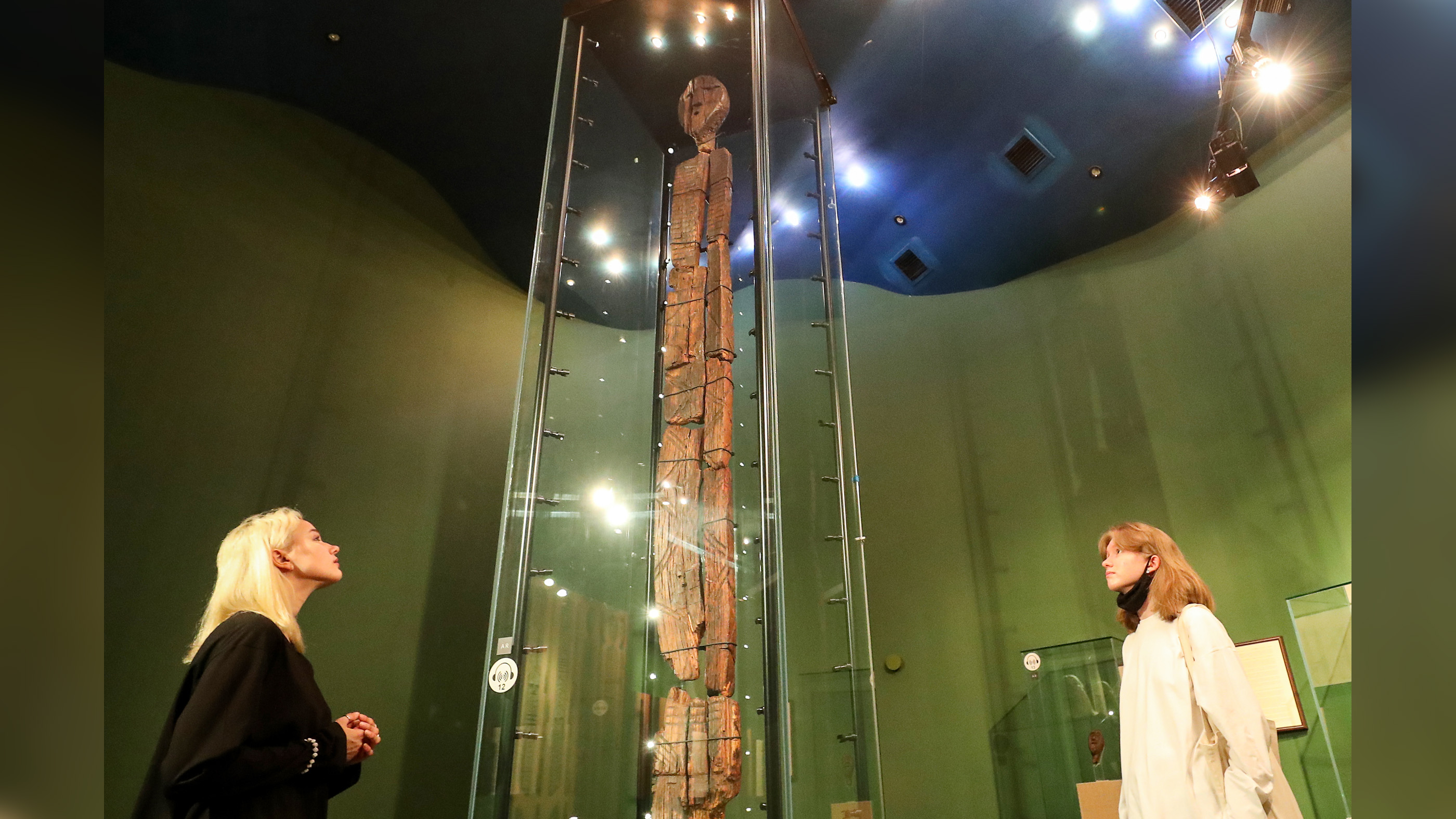Creepy sculpture with human faces is even older than experts thought
Even older than the Great Pyramids of Giza.

A human-shaped wooden idol decorated with an eerie human face and considered the oldest of its kind ever discovered may date back even further in time, researchers now say.
Often called the Shigir Idol after the Shigir peat bog, where it was found in the Ural Mountains in Russia in 1890, the sculpture may have been created 12,100 years ago, scientists now say. Previously, the same scientists had estimated the idol was made about 11,500 years ago, they reported in 2018 in the journal Antiquity.
That's old. For reference, this idol would have already been around to "witness" the Quaternary extinction event some 10,000 years ago, when ice age megafauna such as woolly rhinos went extinct. A couple of other points of comparison: Stonehenge was constructed about 5,000 years ago, and the Great Pyramid at Giza was built more than 4,500 years ago.
Related: 24 amazing archaeological discoveries
When sculpted, the idol would have been about 17.4 feet (5.3 meters) tall, with geometric motifs and several human faces carved into it. The date makes the idol "the world's earliest wooden monumental sculpture," a team of researchers led by Thomas Terberger, an archaeologist at the State Agency of Heritage Service in Lower Saxony in Germany, wrote online in the journal Quaternary International.

Dating the idol
To get the revised age, the team reanalyzed the radiocarbon dates that were published in the 2018 Antiquity paper. The samples published in that paper ranged from 12,500 years ago to 8,600 years ago. All the samples together yielded an average age of about 11,500 years.
When examining the surface of the idol, the team found that wax had been used to repair and reconstruct it over the past 120 years and that wood pigment was used in the 1990s to help with repairs. Radiocarbon dating relies on the ratio of certain radioactive isotopes of carbon that decay at known rates. The team thinks the use of wax and wood pigments in the treatments would have impacted the radiocarbon dates for some of the samples, thus making the idol appear younger than it really was.
Sign up for the Live Science daily newsletter now
Get the world’s most fascinating discoveries delivered straight to your inbox.
Related: Archaeologists are hot on the trail of these 16 spectacular mysteries
The team used only the samples that were farthest from the idol's outer surface.
"We have concluded that the samples from the innermost part were not affected by the treating of the sculpture and that these results are the most reliable," Terberger told Live Science.
Using only the innermost samples, the team dated the idol's wood to 12,250 years ago. They then compensated for the fact that the wood comes from the heart of a tree — a tree section that would have died long before the tree was cut down and used to make the idol. This step is important because carbon dating determines when the organic material (that an artifact is made from) died.
"Because we are dealing with a sample from the central part of the trunk, the felling of the tree can be dated to about 150 years later. With that background, it can be suggested to date the sculpture to [around] 10,100 B.C.," the team wrote.
The date is supported by an analysis of the art on the idol. The geometric motifs on the statue have been found on other artifacts that date back around 12,100 years. "The geometric patterns of the [idol], such as simple lines and zigzag-ornaments, are common elements of Late Palaeolithic and Early Mesolithic decoration," the team wrote.
The idol is now on display at the Sverdlovsk Regional Museum in Yekaterinburg, Russia.
Originally published on Live Science.

Owen Jarus is a regular contributor to Live Science who writes about archaeology and humans' past. He has also written for The Independent (UK), The Canadian Press (CP) and The Associated Press (AP), among others. Owen has a bachelor of arts degree from the University of Toronto and a journalism degree from Ryerson University.









